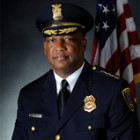
Virtual World Video of True Story
|
A youth justice advocate's childhood encounter with a violent police officer is told via a virtual world machinima, which is a method of making animated film using software similar to that for video games.
Juvenile Justice Information Exchange (https://jjie.org/page/202/)

In late September, Torri was driving down the highway with her 11-year-old son Junior in the back seat when her phone started ringing.
It was the Hamilton County Sheriff’s deputy who worked at Junior’s middle school in Chattanooga, Tennessee. Deputy Arthur Richardson asked Torri where she was. She told him she was on the way to a family birthday dinner at LongHorn Steakhouse.
“He said, ‘Is Junior with you?’” Torri recalled.
Earlier that day, Junior had been accused by other students of making a threat against the school. When Torri had come to pick him up, she’d spoken with Richardson and with administrators, who’d told her he was allowed to return to class the next day. The principal had said she would carry out an investigation then. ProPublica and WPLN are using a nickname for Junior and not including Torri’s last name at the family’s request, to prevent him from being identifiable.
When Richardson called her in the car, Torri immediately felt uneasy. He didn’t say much before hanging up, and she thought about turning around to go home. But she kept driving. When they walked into the restaurant, Torri watched as Junior happily greeted his family.
Soon her phone rang again. It was the deputy. He said he was outside in the strip mall’s parking lot and needed to talk to Junior. Torri called Junior’s stepdad, Kevin Boyer, for extra support, putting him on speaker as she went outside to talk to Richardson. She left Junior with the family, wanting to protect her son for as long as she could ...

A youth justice advocate's childhood encounter with a violent police officer is told via a virtual world machinima, which is a method of making animated film using software similar to that for video games.

WASHINGTON — A group of more than 130 law enforcement officials have banded together with a pledge to reduce incarceration rates, in part through improved community relations.

We prohibit young people from engaging in a whole host of things because we feel they lack the maturity to fully grasp the potential consequences of their actions. In spite of this, we support the idea that an adolescent who commits a violent act has somehow overcome the well-known cognitive and behavioral limitations of their age and should now, in the eyes of the court, be seen as an adult.

October is Youth Justice Awareness Month, and as consensus builds in the Senate and the House around the need for criminal justice reform, the effort to reauthorize the Juvenile Justice and Delinquency Prevention Act (JJDPA) is gaining momentum.

The U.S. has a shameful record in its treatment of justice-involved youth. While recent Supreme Court decisions are promising, this country has much work left to do in handling young people in contact with the justice system.

At the JDAI (Juvenile Detention Alternatives Initiative) conference in Phoenix last month, about 1,000 people from around the country heard Annie E. Casey Foundation President (and former juvenile corrections administrator) Patrick McCarthy repeat his recent call for America to close its youth prisons.

Edward “Noche” Diaz, wearing a black hoodie over a black button-down shirt, came up to a dozen of his supporters before attending two trials as a defendant, both stemming from his arrests at police brutality protests.

It was the perfect campsite, a place where the five kids in the Jaeger family could skip stones in a drifting river and wake up to views of the Montana Rockies. Marietta Jaeger and her husband, their three teenagers and two grade-schoolers in tow, had driven 2,000 miles from their suburban Detroit home to reach the spot at Missouri Headwaters State Park. The swath of land near the tiny Montana town of Three Forks gave way to the hardscrabble Horseshoe Hills, some 50 miles northwest of Bozeman. It was June 1973. The park was the first stop in a long-planned dream vacation, their first family camping trip.